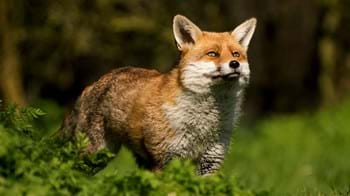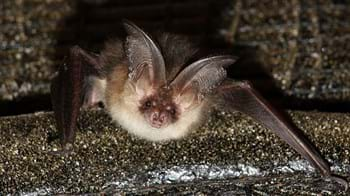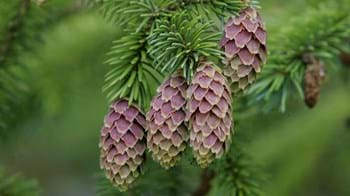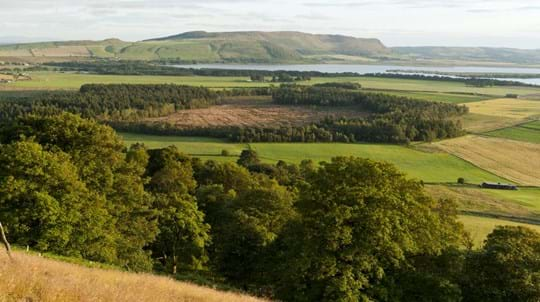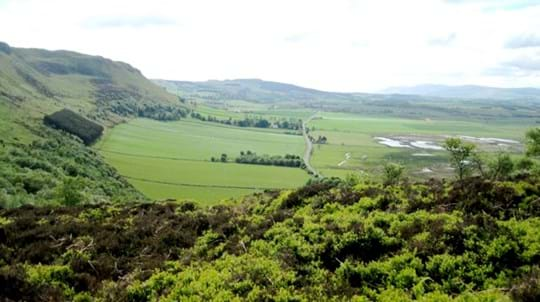
Portmoak Moss
Scotlandwell

Woodland Trust wood
43.59 ha (107.71 acres)
NO179014
Explorer 370
OS Landranger 58
Portmoak Moss, known to locals as The Moss, is one of the few remaining raised bogs in central Scotland.
Much of the neighbouring raised bog has been lost due to peat cutting, afforestation and farming over the years. Here 12 hectares of open ground raised bog remains, skirted by mixed coniferous and birch woodland.
Raised bogs are areas of deep peat raised above the surrounding land. They form over thousands of years from shallow glacial lakes and wet hollows. Over this time, each lake or hollow becomes filled with the un-decayed remains of plants and silt, and peat begins to form. The raised bog at Portmoak Moss is at least six metres deep in places.
Portmoak provides refuge to all sorts of wildlife, from roe deer and red squirrels to a wide variety of birds, fungi and sphagnum mosses. The site is also a hotspot for damsel and dragonflies, butterflies and moths.
Features
- Parking nearby
- Public access
- Waymarked walk
- Marshland
How to get to Portmoak Moss
Portmoak Moss is located just outside the village of Scotlandwell in Kinross-shire. The village itself is 7 miles west of Glenrothes and 6 miles east of Kinross.
The main entrance is reached from an access track off the B920. There is a small parking area at the end of the track with space for around six cars.
The nearest rail access is at Lochgelly 6 miles away, Cardenden around 6 miles away and Markinch, near Glenrothes, around 9 miles from Portmoak.
The nearest bus stop is in the village of Scotlandwell around 0.5km away. There are services from Glenrothes, Cardenden, Kinross and Milnathort.
From the Village of Scotlandwell there is easy access to Portmoak Moss on foot. From the main road junction follow the B920 south for 150m to the edge of the village, then turn right down a track (signposted 'Portmoak Moss') for a further 180m to enter the wood through a wheelchair-access kissing gate.
Further travel information about public transport is available from Traveline, or phone 0871 200 22 33.
Facilities and access
There are two entrances to the site and an extensive network of paths which pass through woodland and open ground over the raised bog. Altogether there is almost 2km of surfaced paths to explore.
The loop path (1.5km, with several sets of steps en route) encircles and traverses the raised bog. Due to the nature of the site this path can become flooded in winter – wellies are recommended!
There is a 400m surfaced, all ability route which avoids the steps on site. There are also many informal unsurfaced paths throughout the site, many of which are often muddy in places and require the crossing of sleeper bridges over wider drains.
The paths also form links with other external routes including the Michael Bruce Way, a circular route which links the villages of Scotlandwell and Kinnesswood with Portmoak, Kilmagad Wood and the Loch Leven Heritage Trail.
There is no Woodland Trust car park on site, however there is a lay-by on the access track where free parking for access to the wood is permitted by the landowner. There is space for approximately six cars.
There are public toilets at Kinross services (M90, J6) approximately 7 miles away. These services are open 24 hours.
Additionally there are several pubs and hotels in both Scotlandwell and Kinross along with cafes and farm shops in the area which have facilities for customers.
Wildlife and habitats
Animals
There is a huge variety of wildlife to discover at Portmoak Moss. Look out for roe deer, brown hare and red squirrel as well as birds including green woodpecker (listen out for their loud laughing call), great spotted woodpecker, redpoll, jay and buzzard. Portmoak Moss is also a noted hotspot for damsel and dragonflies which breed in the deep drains on the moss and hunt across the site. Look out in particular for the four spotted chaser. The site is also an important habitat for butterflies such as small pearl-bordered fritillary and green hairstreak, plus a wide array of moths including buff footman and satellite moths.
Trees, plants and fungi
The woodland at Portmoak Moss is mainly mature mixed conifer plantation and native broadleaved woodland. There is plentiful standing and fallen deadwood which supports a plethora of fantastic fungi and weird and wonderful lichens which cling to the bark of trees. The open ground raised bog habitat is also home to a wide range of sphagnum moss and leafy liverwort species along with cotton-grass, blaeberry, heather, soft rush and coarse grasses. Look out for broad-buckler fern, wavy-hair grass, velvet bent, marsh violet, wood sage, yellow pimpernel and wood sorrel.
Habitats
Portmoak Moss was originally a raised bog habitat that has been degraded over the years by human intervention. The majority of the site is currently mixed coniferous plantation, predominated by Sitka spruce, and areas of mixed native broadleaved woodland dominated by downy birch. At the core of the site is an open ground raised bog which provides an important habitat for many species.
The conifers are gradually being replaced with naturally regenerated native broadleaved species to increase the biodiversity value of the wood. Work is on going to maintain the raised bog through surface levelling, reprofiling of the edge of the bog to reduce erosion and retain water, and the damming of ditches to aid the flow of water and improve water levels. Trees are being removed on and around the perimeter of the bog to help maintain the raised bog habitat and reduce drying out.
About Portmoak Moss
Acquisition
Portmoak Moss was acquired by the Woodland Trust in 1996, with combined funding from the Heritage Lottery Fund, Scottish Natural Heritage and considerable fundraising efforts by the local community and the Woodland Trust.
History
The peat deposits at Portmoak originally developed in a wet hollow which remained after the last Ice Age. As peat deposition increased, this eventually became a raised dome.
In the Middle Ages, the area was part of a much larger uncultivated bog providing peat, turf and pasture to local communities. Peat may also have fuelled local lime kilns and a distillery. Use of Portmoak Moss for peat cutting by residents of Scotlandwell and Kinnesswood is well documented from the 17th to the 20th century, after which the practice of peat cutting ended.
Woodland is known to have been present on parts of the site since the mid 1800s. In the 1960s the site was purchased by the Forestry Commission who drained and planted the site, predominantly with productive conifers. The process of restoring part of the site to a functioning raised bog habitat began in 2000 and is continuing today.
Things to do at Portmoak Moss
Volunteering and monitoring
There is an active local group (Portmoak Community Woodland Group) involved in the maintenance of the raised bog habitat and surrounding woodland. They have been involved since the site was acquired by the Woodland Trust in 1996 and carry out a range of tasks including monitoring water levels on the raised bog.
In addition the site is regularly monitored for insects and birds with sightings recorded. Research is carried out on the site (in particular on the raised bog habitat) by various universities and PhD students on a regular basis.
Walks
There is good access here for walkers. The first part of the surfaced path has a short all-weather looped trail of 400m which is generally flat, avoids steps and is suitable for buggies.
Altogether there is a network of 1,872m of surfaced paths. The loop path (1,472m) encircles and traverses across the raised bog (the path can be temporarily covered in water during the winter months), and passes through areas of mainly coniferous woodland. The northern part of the loop forms part of the Michael Bruce Way, a circular route linking the villages of Scotlandwell and Kinnesswood with the Woodland Trust sites of Portmoak Moss, Kilmagad Wood and the Loch Leven Heritage Trail.
Many informal unsurfaced paths also criss cross the site, some of which pass over wide drains via sleeper and pedestrian bridges. The informal routes are often muddy in places (wellies recommended). To the north there is core path access to Grahamestone and the Loch Leven Trail.









